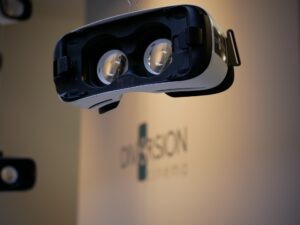Bangor University has deployed virtual reality for gaming-style 3D graphics and virtual patients to help students learn how to use X-ray machines quickly amidst a shortage of radiographers. Moreover, the system will avoid radiation exposure which is conventionally common during the procedure.
The £15,000 virtual reality (VR) software system replicates an X-ray suite, usually costing about £250,000. It was developed in New Zealand, and Bangor University is among the first to deploy it for training purposes.
Third-year students Connie McMahon and Zoe Gonzales were amongst the first to try the system out at the university’s campus in Wrexham.
“It’s a bit strange at first because you have to get used to the controls and your perception of where you are, but it’s quite funny how quickly your brain adapts to where you are. It allows you to focus on your technique,” said Connie.
“Before, we couldn’t take X-rays because of the radiation, but with this technology, we’re able to see the images and experience pressing the buttons and exposing. You’re able to do the experience from the beginning until the end,” added Zoe.
Delyth Hughes, course leader for diagnostic radiography at Bangor University, explained that a significant advantage of the system is that it removes the restrictions on practical learning due to exposure to ionizing radiation.
“One of the most important things students have to learn is how to position so that the X-ray will be taken at the right angle to show any possible issues with the patient,” she said. “Using VR, the student can position a virtual patient and then see if they’ve got it right without any of those issues of expense and exposure.”
Bangor University has increased its annual intake of student radiographers by 25% to 35 to help bridge the gap for a shortage in the NHS.
Follow us on LinkedIn
Read other Articles




